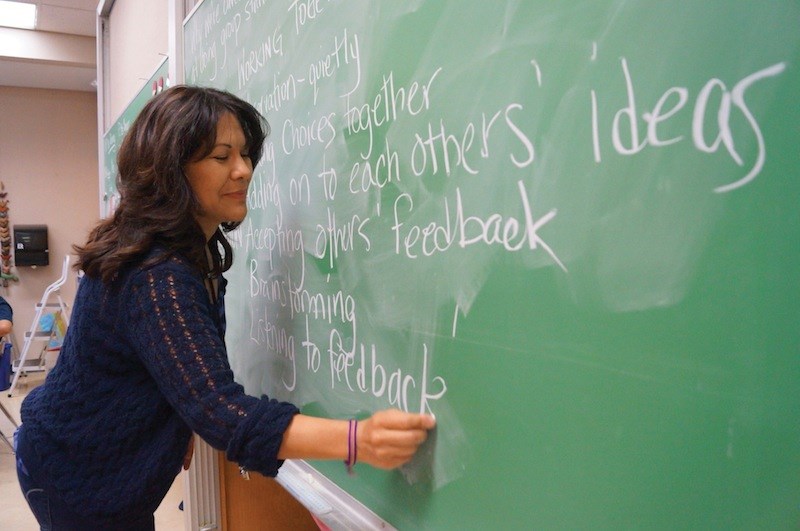The Richmond School District has received $1.7 million in interim back pay from the provincial government in the wake of an extraordinary Supreme Court of Canada ruling last November that restored class size and composition bargaining rights for teachers.
The money is expected to have an immediate impact on some classes across the city.
The payment — negotiated by the BC Teachers’ Federation — is part of a $50 million injection into the public education system this month, which, pro-rated for half a school year, represents only about one-third of the $300 million that will be needed moving forward to restore class sizes and composition to 2002 levels.
Al Klassen, president of the Richmond Teachers’ Association (RTA), said Richmond will be able to hire about 35 full-time teachers with the money.
“We’re allowing schools to determine where the needs are. We’ve created a process that allowed the priority needs to be identified and addressed,” said Klassen.
The RTA and district negotiated some money to be directed to programming. For instance, Laura Buchanan, district director of human resources, said an educational psychologist will be hired to be dispatched to schools, as needed.
“It’s an emerging need across the student population,” said Buchanan.
But, as noted by Buchanan, most of the money is being directed to hiring more teachers.
She said large secondary schools will likely receive two full-time teachers, whereas the smallest elementary schools may only see one teacher for one day a week.
In such an instance, the teacher would be deployed to classrooms as needed, determined by the principal and staff.
The new money is welcomed news for the school district, noted secretary treasurer Mark de Mello.
The district faced a $3.3 million deficit this year and balanced the budget by taking $2 million from a precarious $9.8 million accumulated operating surplus.
This year the district was faced with yet another decline in enrollment, from 20,756 students to 20,345. The 411 student drop was far more than what was predicted (300), said de Mello, who expects another decline next year.
Because the district is funded on a per student bases, a decline in enrollment means a decline in revenue.
However, de Mello noted the extra enrollment decline will not affect this year’s budget, but he fears the district will be faced with more cuts next year, which could eat into the new funding it recieves thanks to the court ruling.
This is because de Mello wasn't optimistic declining enrollment would abate next year.
“The biggest issue is we’re just seeing fewer young families all the way through. . .Anecdotally you hear families can’t afford to live here and then they have an extra kid, so are moving to Surrey, Langley, Maple Ridge,” he noted.
Meanwhile, Klassen said specialty needs vary and include requiring more co-teachers, resource support, English language help and more speech and language assistants.
In all likelihood, no new classrooms will be formed this year, said Klassen. There may be a rare instance in which a new teacher is introduced to one overloaded classroom, however, and the workload is shared.
According to the BCTF the $50 million payment is only a “first step” in restoring class size and composition.
“It means hundreds more teachers will be in schools working with students across the province in a matter of weeks,” said BCTF president Glen Hansman early last month.
“The second and most important goal — full implementation of the 2002 collective agreement language — will now be the focus of talks between the two parties.”
In November, the Supreme Court was quick to condemn then Education Minister Christy Clark’s legislation that stripped the right to bargain class size and composition.
At the time, Clark called it “balanced” legislation. The court ruled, in less than 30 minutes, that it was not.
As a consequence, the BCTF notes that the number of classes with four or more special needs students has ballooned from 9,559 to 16,516, between 2007 and 2016.
“It’s important for parents and the public to understand how our contract language made a difference for kids,” Hansman said.
“It guaranteed supports for students with special needs, and manageable class sizes for all. It ensured teacher-librarians, counsellors, English language and other specialist teachers were there to give students the individual attention they need.”
Klassen noted new funding should help to restore extracurricular programs, as teacher workloads ease slightly, allowing them more flexibility to volunteer their time.



